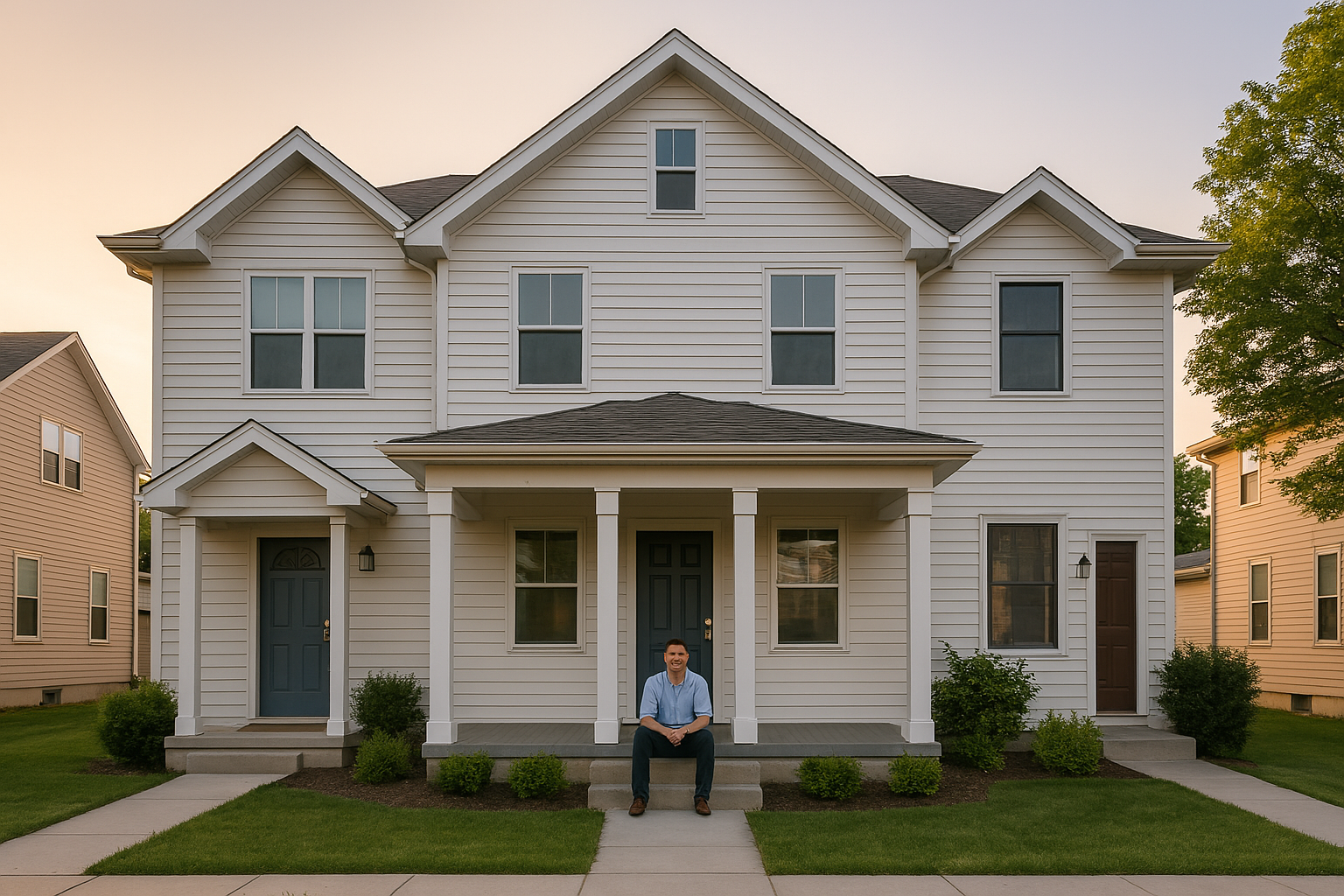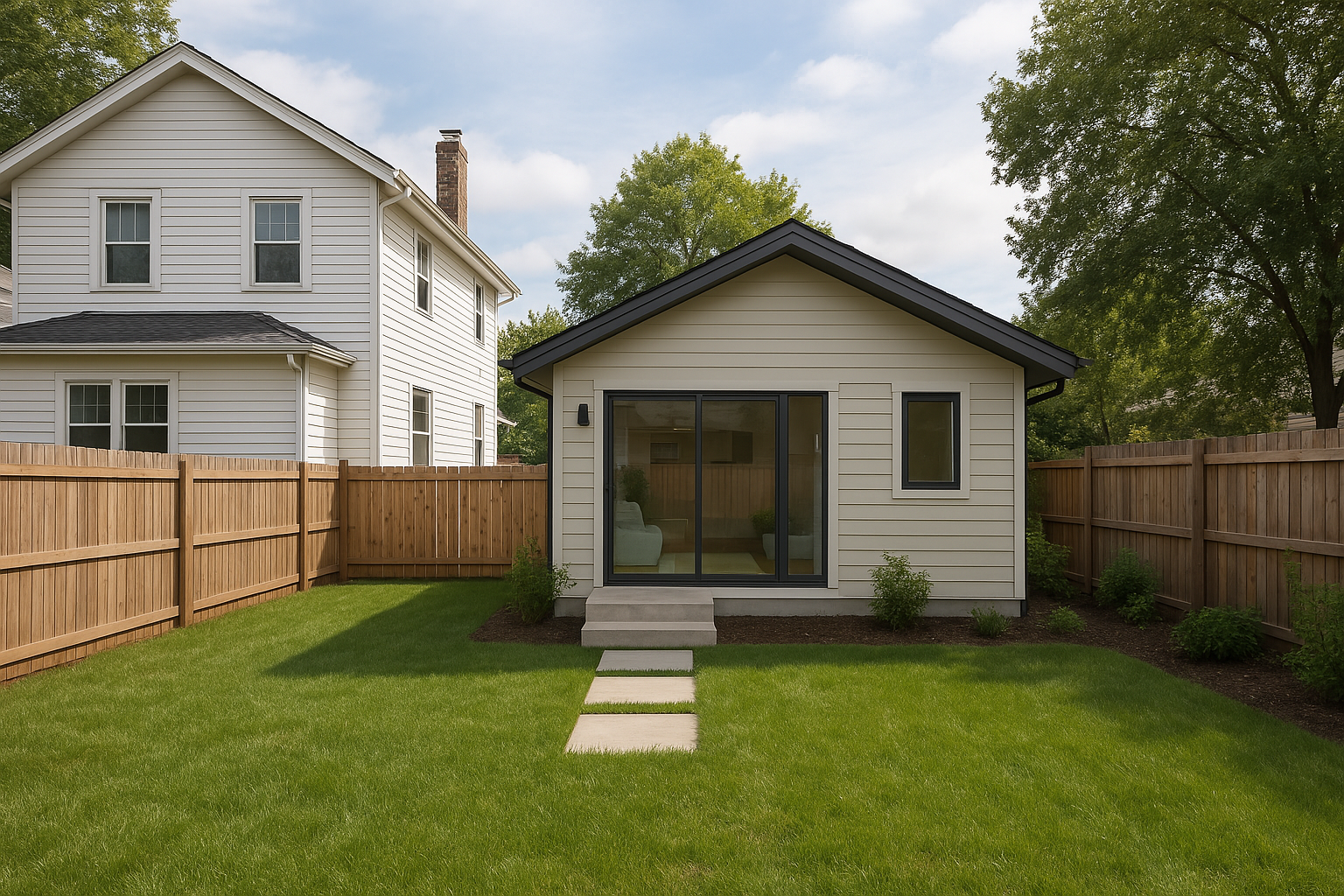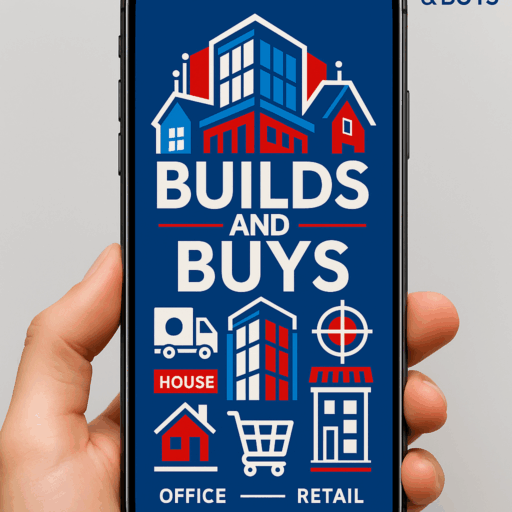
Check out our app!
Explore more features on mobile.
House Hacking: The Ultimate Strategy for Building Wealth Through Real Estate While Living for Free
Published on 2025/03/27
House hacking has emerged as one of the most powerful wealth-building strategies in real estate, allowing everyday people to live for free (or nearly free) while building equity and generating income simultaneously. This comprehensive guide explores how house hacking works, the various strategies to implement it, and how this approach can dramatically accelerate your path to financial independence through real estate.

What is House Hacking? The Strategy Explained
House hacking is a real estate investment strategy where you purchase a property, live in one portion, and rent out the remaining space to offset your housing expenses. This approach transforms your primary residence from a liability into an income-producing asset, allowing you to:
- Eliminate or significantly reduce your housing costs
- Build equity through mortgage principal pay-down (often funded by tenants)
- Benefit from property appreciation while living in the investment
- Access owner-occupant financing with lower down payments (3.5-5% vs. 20-25%)
- Learn property management with lower risk as an on-site owner
According to recent data from the National Association of Realtors, the average American spends 37% of their income on housing. By implementing a house hacking strategy, you can potentially redirect this substantial portion of your income toward building wealth rather than simply covering expenses.
House Hacking by the Numbers: 2025 Market Analysis
The financial benefits of house hacking have become increasingly significant as housing costs continue to rise. Our analysis of current market conditions reveals compelling numbers:
| House Hacking Strategy | Average Monthly Savings | 5-Year Wealth Impact | Annual ROI |
|---|---|---|---|
| Duplex (Live in one unit) | $1,450 | $187,500 | 22.8% |
| Triplex (Live in one unit) | $2,300 | $285,400 | 27.5% |
| Fourplex (Live in one unit) | $3,100 | $375,800 | 32.1% |
| Single Family + ADU | $1,250 | $168,300 | 19.7% |
| Room-by-Room Rental | $1,850 | $198,500 | 24.3% |
Note: 5-Year Wealth Impact includes mortgage pay-down, appreciation, and reinvested savings. Calculations based on median property values in the top 50 U.S. metropolitan areas as of March 2025.
6 Proven House Hacking Strategies for 2025
1. Multi-Family Property Hack
The classic house hacking approach involves purchasing a 2-4 unit property, living in one unit, and renting out the others. This strategy offers the most significant potential for covering your entire mortgage and even generating positive cash flow.
Key Insight: FHA loans allow purchase of properties with up to four units with just 3.5% down payment when owner-occupied, creating exceptional leverage opportunities. A $500,000 fourplex might require only $17,500 down while generating $3,000+ in monthly rental income.
2. Accessory Dwelling Unit (ADU) Strategy
Purchase or create a property with an ADU—a secondary living space like a basement apartment, garage conversion, or backyard cottage. This approach works well in areas with restrictive zoning for multi-family properties but permissive ADU regulations.
Market Trend: ADU-friendly zoning has expanded in 65% of major U.S. cities since 2020, with particularly strong adoption in California, Oregon, and Washington. Properties with legal ADUs command 35% higher values on average while generating 40-60% more rental income than comparable single-family homes.

Modern backyard ADU providing rental income while the owner lives in the main house
3. Room-by-Room Rental Approach
Purchase a single-family home with multiple bedrooms and rent out individual rooms while occupying one yourself. This strategy maximizes per-square-foot rental income and often works best in college towns, urban centers, and areas with high transient populations.
Financial Analysis: A 4-bedroom home often generates 60-75% more total rental income when rented by the room versus as a whole house. In university markets, premium rooms with private bathrooms can command $800-1,200 monthly, potentially covering an entire mortgage payment with just two rented rooms.
4. Live-in Flip Strategy
Purchase an undervalued property that needs renovation, live in it while making improvements, then either refinance to extract equity tax-free or sell after two years to capture tax-free capital gains (up to $250,000 for individuals or $500,000 for married couples).
Tax Advantage: The Section 121 exclusion allows qualifying homeowners to avoid capital gains taxes on up to $500,000 in profit when selling a primary residence held for at least two years. When combined with value-add renovations, this creates a powerful tax-advantaged wealth-building strategy not available to other real estate investments.
5. Vacation Rental House Hack
Purchase a property in a desirable location, live in a portion of it, and rent the remainder as a short-term vacation rental. This approach often generates the highest per-square-foot revenue but requires more active management and consideration of local regulations.
Revenue Potential: Our analysis of Airbnb data shows that strategic vacation rental house hacks in top markets generate 2.5-3.8x the income of traditional long-term rentals. Properties with separate entrances and clearly defined guest spaces command 40% higher nightly rates and significantly better reviews.
6. House Hacking with Home Office Deduction
For self-employed individuals or remote workers, combining house hacking with a legitimate home office creates a dual benefit: rental income from part of the property and tax deductions for the business-use portion of your living space.
Tax Strategy: When properly documented, the home office deduction allows qualifying taxpayers to deduct a portion of mortgage interest, property taxes, utilities, insurance, and depreciation as business expenses—potentially saving thousands in taxes annually while simultaneously implementing other house hacking approaches.
Financing Your House Hack: 2025 Mortgage Strategies
One of the most powerful aspects of house hacking is access to residential financing terms that are significantly more favorable than investment property loans. Here’s a comparison of current financing options:
| Loan Type | Down Payment | Current Interest Rate | Property Types | Key Benefit |
|---|---|---|---|---|
| FHA Loan | 3.5% | 5.25% | 1-4 units | Lowest down payment for multi-units |
| VA Loan | 0% | 4.75% | 1-4 units | No down payment required |
| Conventional 97 | 3% | 5.50% | 1 unit only | Lower mortgage insurance |
| HomeReady/Home Possible | 3% | 5.38% | 1-4 units | Rental income counted for qualification |
| Conventional | 5% (1 unit) 15% (2-4 units) |
5.38% | 1-4 units | Cancellable mortgage insurance |
| Investment Property Loan | 20-25% | 6.75% | Any | Comparison baseline |
Strategic Insight: Using owner-occupant financing for a house hack and then converting to a rental property after the required occupancy period (typically 1 year) creates a significant competitive advantage. Investors following this strategy can secure 15-20% more cash flow compared to direct investment property purchases due to the more favorable loan terms.
Step-by-Step Guide to Implementing Your First House Hack
Step-by-Step Builds: Finding the Ideal House Hack Property
- Identify properties with built-in rental potential (multi-units, homes with ADUs, properties with conversion potential)
- Analyze neighborhood rental demand and rates using market comparison tools
- Calculate the rental-to-price ratio (monthly rent ÷ purchase price) – target 0.8% or higher for optimal house hacks
- Evaluate renovation needs and costs, focusing on improvements that add rental value (additional bathrooms, separated entrances)
- Consider zoning regulations and rental restrictions that may impact different house hacking strategies
Pro Tip: Properties that need cosmetic updates but have good structural integrity often make the best house hacks, offering 15-25% discounts while allowing value-add improvements that dramatically increase rental potential.
Step-by-Step Buys: Financing and Acquiring Your House Hack
- Get pre-approved for owner-occupant financing with a lender experienced in house hacking
- Ensure your offer letter specifies your intent to owner-occupy (required for residential financing)
- Negotiate favorable terms by highlighting any rental challenges the seller might be concerned about
- Consider seller financing or assumption of existing loans for additional flexibility
- Structure the purchase to minimize closing costs and maximize early rental income
Negotiation Strategy: When making offers on potential house hack properties, focus on terms beyond just price. Requests for early occupancy, seller credits for improvements, or rate buydowns can significantly improve your returns without affecting the seller’s bottom line.
Step-by-Step Invest: Maximizing Returns and Building Wealth
- Set up separate accounting for personal and rental portions of your property
- Implement systems for tenant screening, rent collection, and maintenance requests
- Track all expenses meticulously for tax deduction purposes
- Create a capital improvement plan to steadily increase property value and rental rates
- Develop an exit strategy: refinance to extract equity, sell with tax advantages, or convert to a full rental
Wealth Acceleration Strategy: The most successful house hackers use their properties as a launching pad, living in each for 1-2 years before converting to a rental and moving to their next house hack. This “rinse and repeat” approach can build a substantial rental portfolio with minimal cash investment in just 5-10 years.
Real-World Case Study: The Five-Year House Hacking Path to Financial Freedom
Sarah’s House Hacking Journey: From Renter to Owner of 5 Properties in 60 Months
Sarah began her real estate journey with $25,000 in savings and a $65,000 annual income as a marketing professional. Here’s how she implemented a systematic house hacking strategy:
- Year 1: Purchased a $275,000 duplex with FHA financing (3.5% down). Lived in one unit while renting the other for $1,450/month, reducing her housing expense from $1,600 to just $350/month.
- Year 2: Used $18,000 in saved housing costs to make improvements to both units, increasing rental income by $250/month and property value by $35,000.
- Year 3: Converted duplex to a full rental property and purchased a $350,000 triplex using another FHA loan (requiring one-time occupancy change). House hacked again, now living for free while generating $350/month positive cash flow.
- Year 4: Refinanced the first duplex to extract $50,000 in equity. Used these funds as a 20% down payment on a $245,000 single-family rental property.
- Year 5: Repeated the strategy, moving to a fourplex while converting the triplex to a full rental. Now owns 5 units producing $4,200/month in net cash flow while living for free.
Five-Year Financial Impact:
- Total cash invested: $43,500
- Total equity accumulated: $385,000
- Monthly cash flow: $4,200 ($50,400 annually)
- Return on investment: 116%
- Passive income created: Equivalent to a $1.26 million investment portfolio (at 4% withdrawal rate)
Common House Hacking Challenges and How to Overcome Them
1. Privacy Concerns
Living in close proximity to tenants is often the biggest hesitation for potential house hackers. Strategic property selection and thoughtful design modifications can significantly mitigate these concerns.
Solution: Prioritize properties with separate entrances, sound insulation between units, and clear boundary delineation. Invest in soundproofing materials (typically $2-4 per square foot) and privacy landscaping during your initial renovations—these improvements often deliver the highest quality-of-life ROI for house hackers.
2. Tenant Management Complexities
Managing tenants while living on-site requires clear boundaries and professional systems to avoid awkward neighbor-landlord dynamics.
Solution: Establish formal communication channels (dedicated email/phone for property matters), create detailed lease agreements with clear expectations, and consider using property management software to formalize rent collection and maintenance requests even while living on-site.
3. Zoning and Legal Restrictions
Many areas have regulations limiting rental arrangements, particularly for room-by-room rentals or ADU conversions.
Solution: Research local zoning codes thoroughly before purchasing. Many restrictions have exceptions or variance processes, especially for owner-occupied properties. Areas adopting affordable housing initiatives often provide explicit house hacking opportunities through relaxed ADU regulations or increased occupancy limits.
4. Financing Qualification Hurdles
First-time house hackers often struggle to qualify for mortgages on multi-unit properties due to higher purchase prices and stricter lending requirements.
Solution: FHA loans allow consideration of potential rental income (75% of market rents) for qualification purposes on multi-unit properties. Working with lenders experienced in house hacking can dramatically increase approval odds. HomeReady and Home Possible programs specifically accommodate first-time buyer house hackers with flexible income requirements.
Tax Strategies and Implications for House Hackers
House hacking creates unique tax situations that, when properly managed, can significantly enhance returns. Here are key strategies to optimize your tax position:
- Proportional Expense Allocation: Properly document and allocate expenses between personal and rental portions of your property. Square footage is the most commonly accepted allocation method for mixed-use properties.
- Depreciation Optimization: Claim depreciation deductions on the rental portion of your property, creating substantial paper losses that can offset rental income. A $300,000 property with 75% rental allocation creates approximately $8,200 in annual depreciation deductions.
- Cost Segregation: Consider a cost segregation study for larger properties to accelerate depreciation deductions. This approach typically identifies 20-30% of property value for shorter depreciation schedules (5-15 years versus 27.5 years).
- Section 121 Exclusion Planning: Strategically time your moves and sales to maximize the $250,000/$500,000 capital gains exclusion available for primary residences held for two of the last five years.
Tax Planning Insight: Consult with a real estate-focused CPA when implementing house hacking strategies. The proper setup of accounting systems and expense tracking can often save $3,000-7,000 annually in tax liability for a typical house hack property.
2025 House Hacking Hotspots: Market Analysis
While house hacking can work in virtually any market, certain regions offer particularly favorable conditions. Our analysis of current market data highlights these prime house hacking locations:
| Metro Area | Optimal Strategy | Rental-to-Price Ratio | Key Advantage |
|---|---|---|---|
| Philadelphia, PA | Multi-unit | 1.1% | Abundant affordable multi-units with strong rental demand |
| Columbus, OH | House with ADU | 0.9% | Recent ADU-friendly zoning changes |
| Minneapolis, MN | Multi-unit | 0.85% | 2040 Plan eliminated single-family zoning |
| Portland, ME | Vacation rental | 1.05% | Strong seasonal rental market with year-round base |
| Raleigh-Durham, NC | Room-by-Room | 0.88% | Strong university and tech employment growth |
Market Selection Tip: Focus on areas with a combination of strong employment growth (especially in sectors with young professional workers), favorable zoning for multi-unit properties or ADUs, and a significant gap between average mortgage payments and average rental rates.
Advanced House Hacking: Future Trends and Innovations
The house hacking landscape continues to evolve, with several emerging trends poised to shape the strategy in the coming years:
Modular and Pre-Fabricated ADUs
The rising popularity of factory-built ADUs that can be installed in as little as a week is revolutionizing the house hacking market. These units offer predictable costs ($120-185 per square foot) and significantly faster implementation compared to traditional construction, enabling investors to accelerate their house hacking timelines.
Co-Living House Hacks
Inspired by the success of commercial co-living developments, savvy house hackers are designing properties specifically for premium shared living experiences. These house hacks feature larger common areas and amenities while maximizing bedroom count, often achieving 20-35% higher per-square-foot rental income than traditional room rentals.
Technology-Enhanced Management
The integration of smart home technology, digital access control, and property management software has significantly reduced the traditional headaches of on-site landlording. Modern house hackers leverage these tools to create systems that minimize tenant interactions while maximizing rental performance.
Conclusion: The Long-Term Impact of House Hacking on Financial Independence
House hacking represents one of the most accessible and powerful entry points to real estate investing, allowing everyday people to transform their largest expense into their most valuable asset. By eliminating housing costs and accelerating wealth building through favorable financing and tax advantages, house hacking can compress the timeline to financial independence by 5-10 years for the average American.
The most successful house hackers approach the strategy not as a one-time transaction but as a comprehensive lifestyle and investment system—living intentionally with a focus on long-term wealth creation rather than short-term housing preferences. Those willing to make this mindset shift often find that the temporary sacrifices of house hacking lead to permanent financial advantages that reshape their entire financial trajectory.




